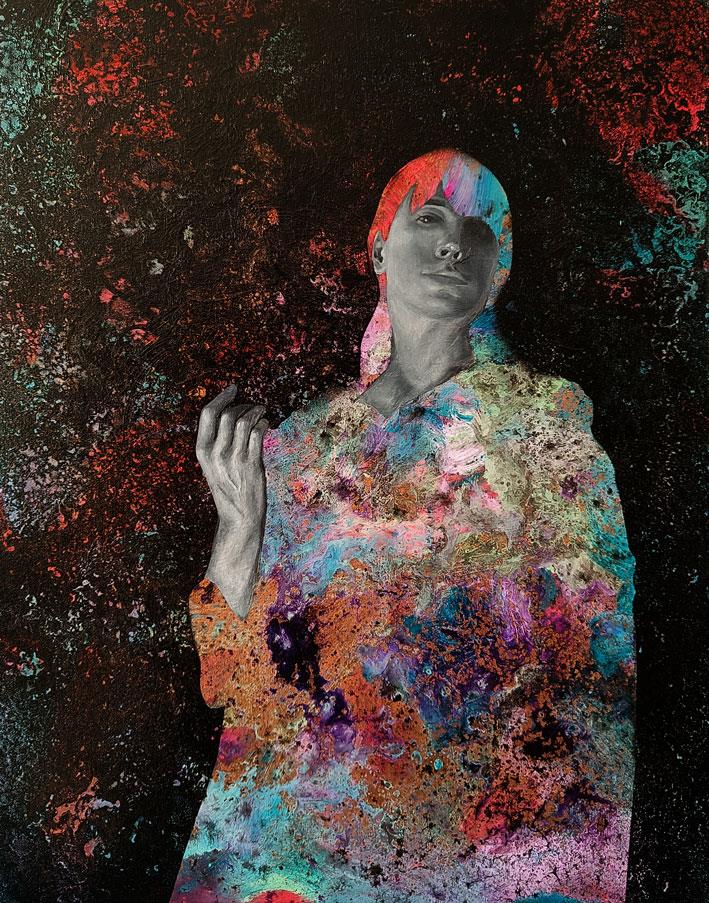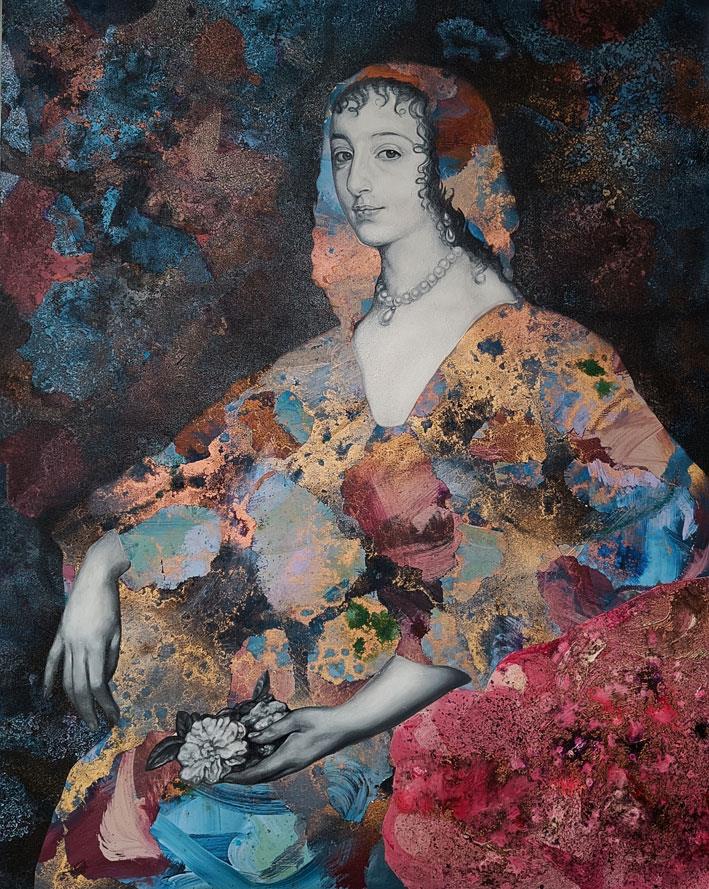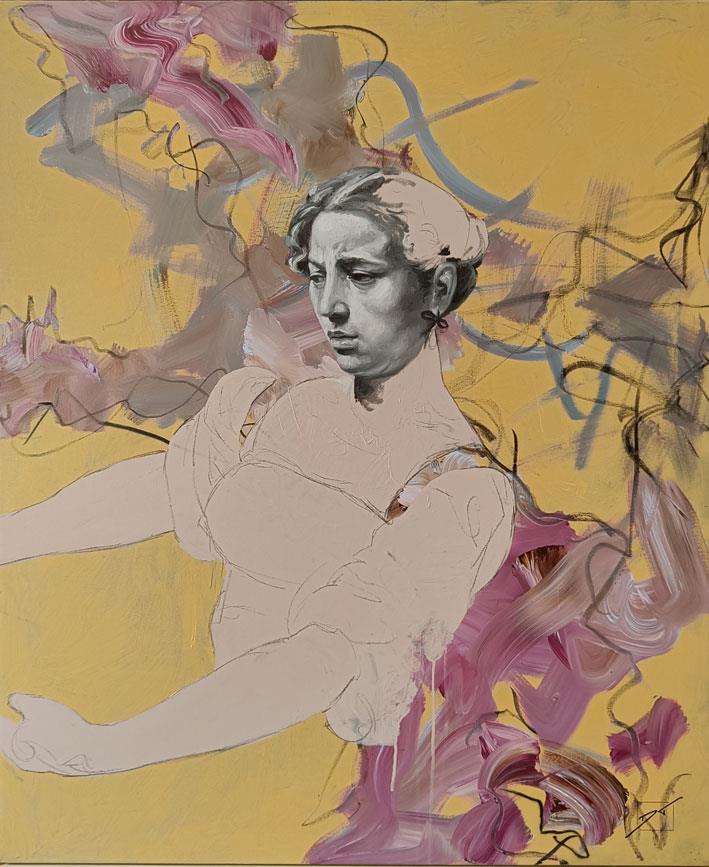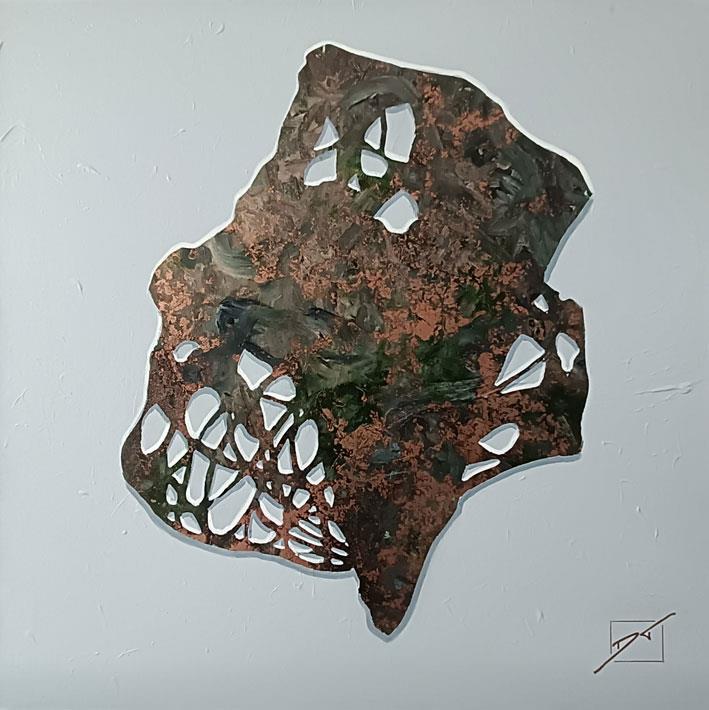It's that time of year when one of our very favourite artists returns to il-Kamra ta' Fuq in Mqabba, presenting yet another exciting solo exhibition. Obviously, I'm referring to Darren Tanti.
This marks his fourth solo show at il-Kamra ta' Fuq, and my fifth as his curator. Lucky me... I know!!! As we've seen with Darren in his past exhibitions, he never fails to surprise, sometimes even shock, the audience with his eclectic mix of works and series. It's simply in his nature. His artistic journey is one of constant transformation, driven by an insatiable need, almost a hunger for experimentation and originality. He's always brimming with inspiration, chasing new ideas and launching fresh projects. And believe me, I say this with confidence, because I have the privilege of being in the loop, and often involved from the very start, when these concepts are still in their spark phase.

This exhibition, as the title rightly suggests - In Search of the Unknown - is exactly about that. Experimentation takes centre stage, with the pace of Tanti's thought process captured in a rapture of distinct (what I like to call) series of works presented here. The evolution of his style is striking and rapid, yet somehow cohesive. You can trace the thread of what's happening, where he's heading, layer by layer. And to top it all off, everything is executed with the technical finesse of a master.
Perhaps I'm lucky to be able to trace each step of this evolution in every painting, because I spend quite a bit of time in his studio, and because we talk a lot about his work. So let me begin by reminding you, dear readers, of his previous exhibition, Remember/Dismember, also held at il-Kamra ta' Fuq. It's the perfect place to start building the context for what will come.
The exhibition Remember/Dismember explored how an artist can "build an artwork" from memory. This led Tanti to extract a generic mental image and translate it onto canvas in a highly abstracted way, focusing primarily on colour, composition, light and shade. He would then superimpose a more accurate depiction (or selected fragments) of the actual historical painting onto the abstraction. The result offered fascinating insights into his capacity for visual recall: sometimes the colours and composition were spot-on, other times there were misjudgments, surprising coincidences and even entirely new possibilities.
In the exhibition, In Search of the Unknown, we see works that echo certain notions from the previous exhibition, but here, Tanti is not working from memory. Instead, he delves deeper into abstraction, combining it with "patches" rendered in grisaille, where realistic faces or seemingly random body parts emerge with striking precision. These are juxtaposed with bold, raw twirls of colour, often in a bubblegum pink, that seem to claim an odd centrality within the composition. There is no memory game here. In some pieces, contemporary models were used; in others, Tanti references Caravaggio, Anthony van Dyck and Alexandre Cabanel. But the approach is no longer rooted in recollection; instead, it is a conscious, deliberate reinterpretation.

From Van Dyck's Henrietta Maria of France, Tanti extracts her mind and heart into trompe l'oeil cut-outs executed in a completely abstract manner. But then he takes it further, producing a second level of cut-out play within the first, forming a strange, web-like structure. In Henrietta's Mind, the experimentation intensifies: two parallel lines jut out from the abstract pattern, and three reddish circles are added; an unusual element I don't recall seeing in any of his previous works. Who knows where this might lead next? (It's worth noting that this cut-out technique stems from an earlier series in which Tanti reinterpreted classical works using silhouette cut-outs. Here, he pushes the idea further, now the abstraction itself becomes the cut-out.)

Tanti's fascination with Caravaggio's Judith Beheading Holofernes is not new. In Judith after Caravaggio, we see an abstract, ochre-hued background with Judith's face rendered in grisaille. The rest of her figure is drawn in sketch form, with delicate lines suggesting the straps of her dress, allowing the background to bleed through. The raw, bubblegum pink brushstroke makes an appearance here too, an odd but compelling visual anchor that ties these works together.
From this central work, three smaller artworks emerge, difficult to describe, yet captivating. Each features a plain background split into two colour-blocked sections, one of which is always black. At the centre of each, an abstract form dominates, positioned so that it sits partly on the black and partly on the coloured area. The playful twist? On the coloured side, Tanti renders the form with a 3D illusion; on the black, it flattens out. Holofernes' Head perhaps represents the trail of blood trailing the decapitated head. The Aftermath reads like a fiery flame, an eruption of chaos and noise. Reckoning could be Judith's moment of triumph, a quiet but potent emotional portrait of pride and emotional victory.
During my last studio visit to Darren's, about two weeks ago, he mentioned he was about to start a new painting, a large one, which he promised would be finished in time. He looked particularly excited about it. And what he created was yet another masterclass in both technique and conceptual depth. The large painting became part of a quadriptych titled Afloat, which, in its entirety, is a reinterpretation of Alexandre Cabanel's Birth of Venus. The three smaller works (representing abstracted versions of the three angels hovering over Venus in the original painting) feature 3D cut-outs once again, but this time, they're executed quite differently from the series I previously mentioned. They seem to merge elements from both Henrietta and Judith's smaller companion works, resulting in yet another complex and daring experiment.

One of the three pieces, Afloat III, takes the concept even further. Tanti adds a horizontal stripe at the bottom, an abstract passage that, quite ingeniously, ties into the large, mysterious painting. In that final piece, a reclining nude (a reinterpretation of Cabanel's Venus) lies above the same abstract strip, which begins as a clean horizontal line and ends in a whimsical curvature. No matter how much I try to describe it and no matter how much you zoom in on the image accompanying this article, the skin of the figure, rendered partly in realistic grisaille and partly in raw, abstract brushstrokes, is so painfully beautiful, you owe it to yourself to experience the artwork in the flesh. Pun absolutely intended.

To conclude, this exhibition isn't presented as a finalised body of work, but rather as an exploration of the creative process, the journey that unfolds before the artist arrives at a "solution". These works encapsulate Tanti's ongoing pursuit of discovery and meaning through art. He has embraced the opportunity to share the often-unseen aspects of his practice. This openness feels like a natural extension of his studio-classroom environment, where the emphasis on process is fundamental.
 ca
ca
And to really conclude (because I just need to tell someone), I've seen what his next body of work is going to be about (or at least one of his future series)... and it's so mind-blowing, I have a feeling we'll have to travel abroad to see that exhibition.
Tanti's practice centres on hyperreality and the exploration of experimental techniques, including the hybridisation of digital and academic forms of art. He has participated in numerous art projects and exhibitions internationally. Among his most prestigious appearances are Time, Space, Existence at Palazzo Mora during the Venice Architecture Biennale in 2014 (curated by AP) and Homo Melitensis, where he was one of the artists representing Malta at the Venice Art Biennale in 2017.
He has also participated in all editions of the acclaimed APS Mdina Cathedral Contemporary Art Biennale. His major solo exhibitions include Aħmar Ħelu u Qares (2021), Inaction is a Weapon of Mass Destruction (2022), Remember/Dismember (2023) and Apotheosis (2023). His works are part of numerous private collections in Malta and abroad, as well as public collections such as Muża and the Embassy of Malta in Washington, DC.
In Search of the Unknown is on until 6 July.
For more information, follow il-Kamra ta' Fuq on social media